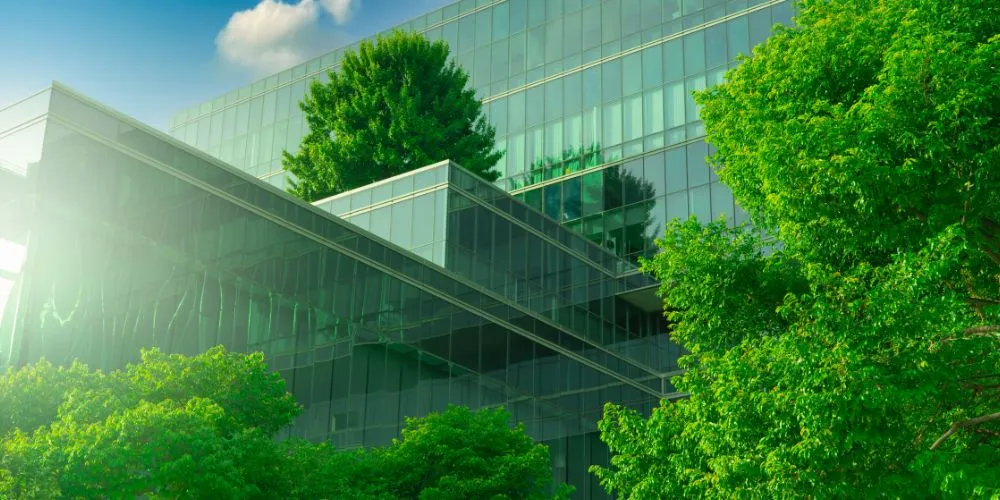Sustainable construction has emerged as a cornerstone in the evolution of the built environment, offering innovative approaches to construction that prioritize environmental responsibility, resource efficiency, and long-term resilience. This article explores the multifaceted realm of sustainable construction, delving into its fundamental principles, diverse methodologies, key advantages, notable applications, and the challenges it addresses within the dynamic landscape of modern urban development and infrastructure.
Unveiling Sustainable Construction
Sustainable construction, also understood as green building, is a holistic approach that aims to minimize the environmental impact of construction activities while optimizing resource utilization and promoting energy efficiency. It encompasses a wide range of practices, materials, and technologies that aim to create buildings and infrastructure that meet the needs of the present without compromising the capacity of future generations to meet their own needs. It extends beyond environmental considerations, also emphasizing social and economic aspects, thereby fostering a balance among people, the planet, and profit.
Key Components of Sustainable Construction
Understanding the key components of sustainable construction is essential for comprehending its holistic approach and impact:
- Energy Efficiency: Energy-efficient design and technologies are pivotal in sustainable construction. It includes using renewable energy sources, advanced insulation materials, and energy-efficient HVAC systems to minimize the energy consumption of buildings.
- Materials Selection: This emphasizes the use of eco-friendly and recycled materials. It includes responsibly sourced wood, recycled steel, and low-impact concrete alternatives, reducing the environmental footprint associated with material extraction and production.
- Water Conservation: Incorporating water-efficient design features, such as low-flow fixtures and rainwater harvesting systems, contributes to sustainable construction practices. Conserving water resources is integral to minimizing the environmental impact of construction projects.
- Waste Reduction: Minimizing construction waste through recycling and responsible disposal is a key component. It aims to reduce the amount of waste generated during construction activities, diverting materials from landfills and promoting a circular economy.
Methodologies of Sustainable Construction
Sustainable construction employs various methodologies to achieve environmentally responsible and resource-efficient outcomes:
- Green Building Certifications: Certifications like LEED (Leadership in Energy and Environmental Design) provide a framework for sustainable construction. Projects that meet specific criteria such as energy efficiency, water conservation, and indoor air quality can receive certification, signaling their commitment to sustainability.
- Life Cycle Assessment (LCA): LCA is a methodology that evaluates the environmental effects of a building or infrastructure assignment throughout its entire life cycle. It includes extracting raw materials, construction, operation, maintenance, demolition, or recycling.
- Biophilic Design: Biophilic design integrates natural elements into the built environment, fostering a connection with nature. Green roofs, natural light optimization, and incorporating green spaces within buildings contribute to the well-being of occupants and enhance sustainability.
Advantages of Sustainable Construction
The adoption of sustainable construction practices brings forth a multitude of advantages, reshaping how buildings are designed, constructed, and operated:
Environmental Stewardship and Climate Resilience
One of the primary advantages of sustainable construction is its emphasis on environmental stewardship and climate resilience. By minimizing carbon emissions, reducing energy consumption, and promoting responsible resource use, sustainable buildings help mitigate the impact of climate change.
Cost Savings and Operational Efficiency
It leads to cost savings and operating efficiency over the long term. Energy-efficient buildings typically result in lower utility bills, and the use of durable, low-maintenance materials reduces operational and maintenance costs, providing a compelling economic case for sustainability.
Enhanced Health and Well-Being
It has a positive impact on occupant health and well-being. Improved indoor air quality, ample natural light, and spaces designed with human comfort in mind contribute to a healthier and more effective environment for building occupants.
Increased Property Value and Marketability
Sustainable buildings typically command higher property values and are more marketable. The growing awareness of environmental issues has increased demand for green buildings, making them attractive to environmentally conscious investors, tenants, and buyers.
Applications of Sustainable Construction
Sustainable construction finds applications across diverse sectors, transforming how various types of buildings and infrastructure are conceptualized and realized:
Residential Green Homes Promoting Eco-Living
In residential construction, green homes incorporate sustainable design features, including energy-efficient appliances, solar panels, and eco-friendly building materials. These homes provide residents with a sustainable and energy-conscious living environment.
Commercial Green Buildings for Corporate Responsibility
Commercial green buildings showcase corporate responsibility and environmental stewardship. Offices and commercial spaces designed with sustainability benefit from lower operating costs, improved employee well-being, and a positive brand image associated with environmental consciousness.
Sustainable Infrastructure Projects for Urban Development
It extends to infrastructure projects, including bridges, roads, and public spaces. Integrating green infrastructure elements, such as permeable pavements and green transportation corridors, enhances the overall sustainability of urban development.
Educational Institutions as Sustainable Learning Environments
Educational institutions are increasingly adopting sustainable construction practices. Green schools and campuses prioritize energy efficiency, healthy learning environments, and sustainable landscaping, setting an example for future generations.
Challenges in Sustainable Construction
While the advantages are evident, the practice of sustainable construction faces its own set of challenges. Addressing these challenges is crucial for mainstreaming sustainable construction practices:
Initial Cost Barriers and Return on Investment Concerns
One of the challenges in sustainable construction is the perception of higher initial costs. While sustainable features may have higher upfront expenses, the long-term return on investment, including energy conserving and operational efficiency, often outweighs these initial costs.
Limited Availability of Sustainable Materials
The limited availability of sustainable materials can pose a challenge to builders and developers. As demand for eco-friendly materials increases, the industry must innovate and scale up the production of sustainable alternatives.
Regulatory and Standardization Variances
Regulatory and standardization variances across regions can create challenges for consistently implementing sustainable construction practices. Harmonizing standards and regulations globally is crucial for creating a unified approach to sustainable construction.
Future Trends in Sustainable Construction
As technology continues to evolve, future trends in sustainable construction point toward advancements that further enhance its capabilities:
Smart Buildings and Sustainable Technologies Integration
Integrating smart technologies in buildings is a future trend that aligns with sustainable construction. Smart buildings utilize data and automation to optimize energy usage, enhance occupant comfort, and enhance overall building performance.
Circular Economy Principles for Material Reuse
Circular economy principles, emphasizing the reuse and recycling of materials, are gaining prominence. Future sustainable construction practices will increasingly focus on minimizing waste and maximizing the lifespan of building materials.
3D Printing for Sustainable Construction
3D printing technology is emerging as a sustainable solution for construction. This innovative approach enables precise material utilization, minimizes construction waste, and facilitates the creation of distinctive architectural designs with a reduced environmental impact.
Climate-Responsive Design for Resilient Structures
Climate-responsive design is a future trend that involves creating structures that adapt to changing climate conditions. It will increasingly incorporate design elements that enhance stability against extreme weather events and contribute to climate adaptation.
Conclusion
Sustainable construction stands at the forefront of a paradigm shift in how we conceive, design, and build structures. Its ability to harmonize environmental responsibility, resource efficiency, and societal well-being positions it as a transformative force in the evolution of the built environment. While challenges persist, ongoing advancements and future trends indicate a dynamic and promising future for sustainable construction, with applications extending into new frontiers of eco-friendly urban development and infrastructure innovation.










